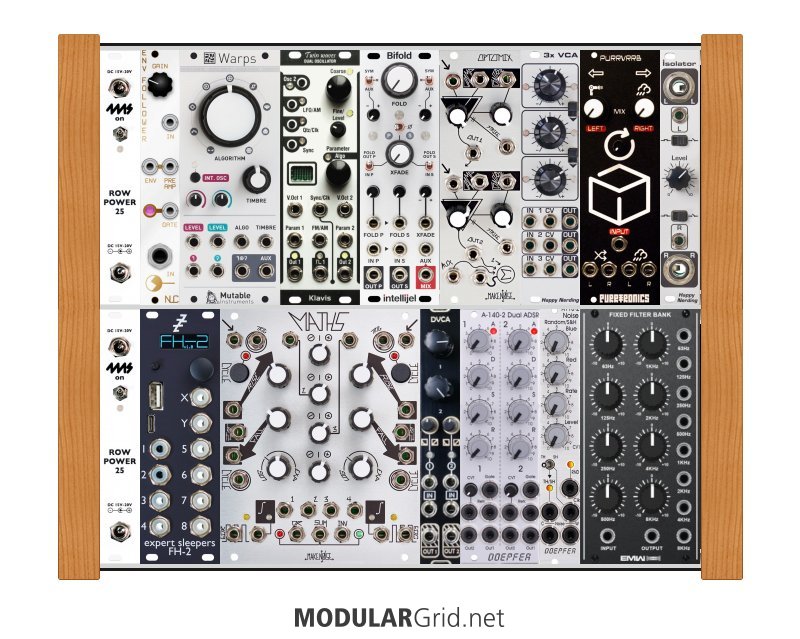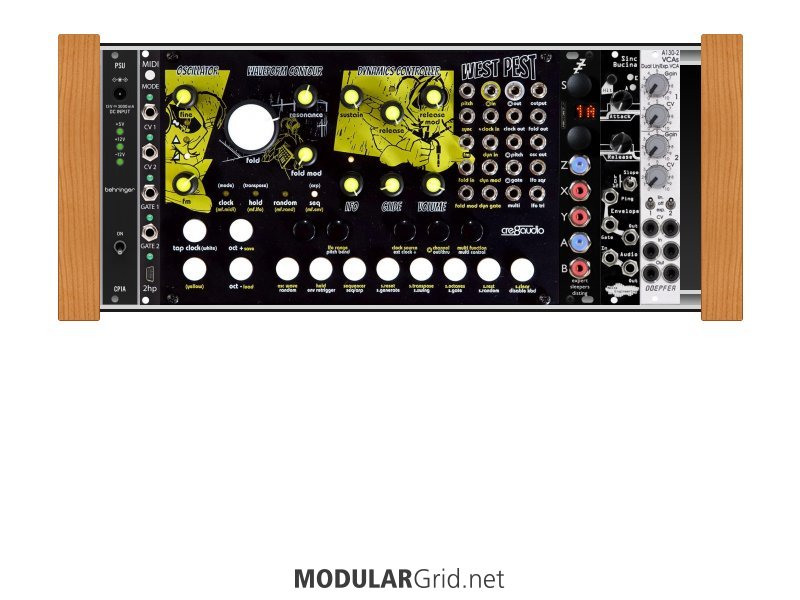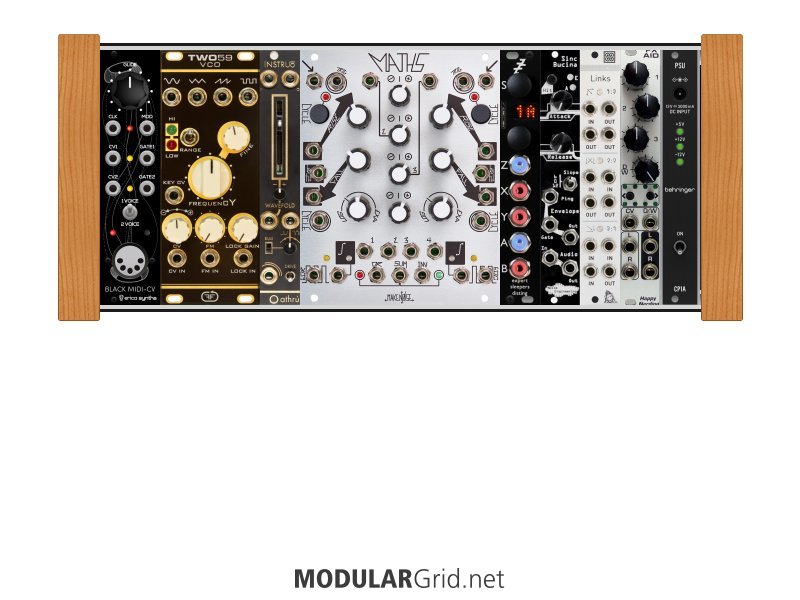Took a whack at this, although I didn't bother with the 1 x 60 idea at all. Too small, really...you COULD probably jam all of that into 60 hp, but this 2 x 60 variation shows where a build like this could go...and it might be something you need to be thinking about right now, because if you have an indication that you might need to go bigger, you should DEFINITELY follow your gut and build THAT.

OK, let's look at this thing. First up, the layout is VERY different. Most of the audio (except the noise/EQ setup, more on that in a bit) is in the top cab. After the P/S (went with 4ms Row 25s here...ample current, plus easy daisychaining from just a single external "brick") you have a NLC input module with full envelope following. This then has a Warps next to it, primed to scramble the hell out of any external audio as needed. A Klavis Dual Waves gives you your two VCOs...albeit these also have some interesting extra features, one of which is internal quantizing (with several scales). Intellijel's new dual wavefolder is after this, offering dual inputs so that you could ALSO use the wavefolder as a wave-mangling 2-channel mixer. If not, then you can just as easily use the Optomix (your LPGs) for a "clean" mix via two LPG inputs and a third fixed-level AUX in. A Happy Nerding 3xVCA gives you breakout-able VCAs and/or mixing for your audio, then this outputs to the Purrverb digital spring, since spring reverb was a big part of the Buchla sound, especially in the 100 series. And since this can go mono-to-stereo, I put a Happy Nerding Isolator in as your stereo output level control, plus it offers transformer isolation, which can be a major asset if/when gigging...plus you can push the transformers a bit for a little more warmth via a bit of saturation.
Bottom row: after the other Row 25, you'll find an Expert Sleepers FH-2. Not only is this a user-configurable MIDI over USB interface, it can ALSO function in USB host mode, meaning that you can grab this, a USB-MIDI controller like a Keystep, and you've got your "go kit" since you can jack the Keystep (or any other USB controller) directly into the modular. Then, Maths. Of course. An After Later DVCA (1/2 of a Veils, basically) gives you curve-adjustable VCAs for either audio OR CV/mod level control. Then a dual ADSR for "normal" envelopes. After this is your "noise voice", which starts with Doepfer's A-118-2, and this also provides a random voltage source, an extra clock source, track and hold, or sample and hold...all of which will definitely be of use for the entire rig. The noise can feed on to the EMW Fixed Filter bank...which not only gives you graphic EQ-type timbral control, it ALSO has individual outputs for each band! And you can feed that to either the 3xVCA or the Optomix.
This is a much better look at where your build should be heading, according to some indications you gave about the 2-row upgrade. I simply opted to do that in THIS build, which hopefully gives you a much clearer idea of how to proceed so that the jump from one to two rows isn't such a hassle. Hope this helps!



